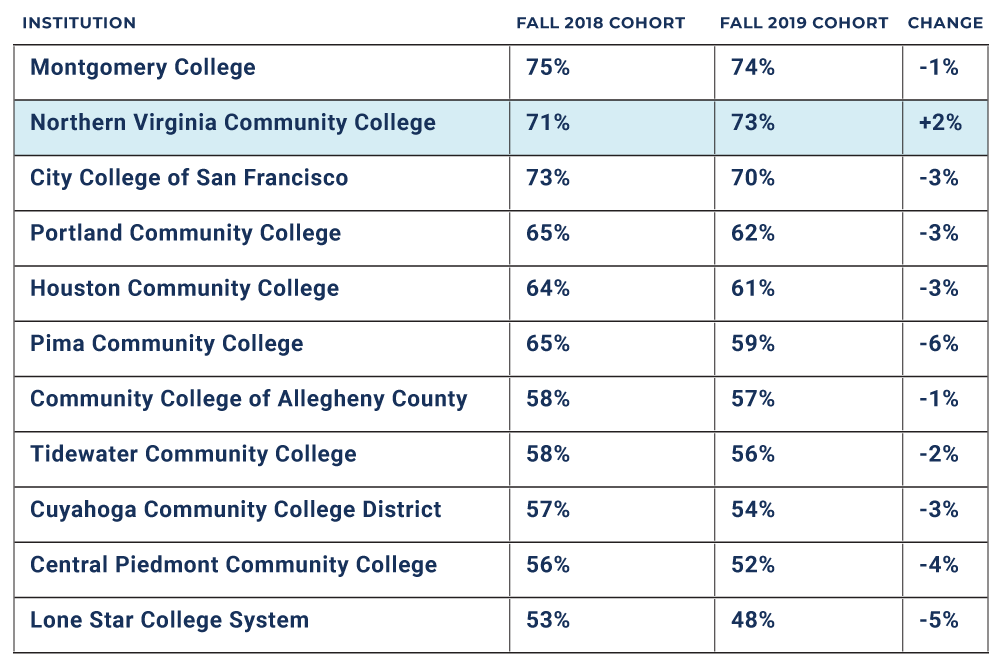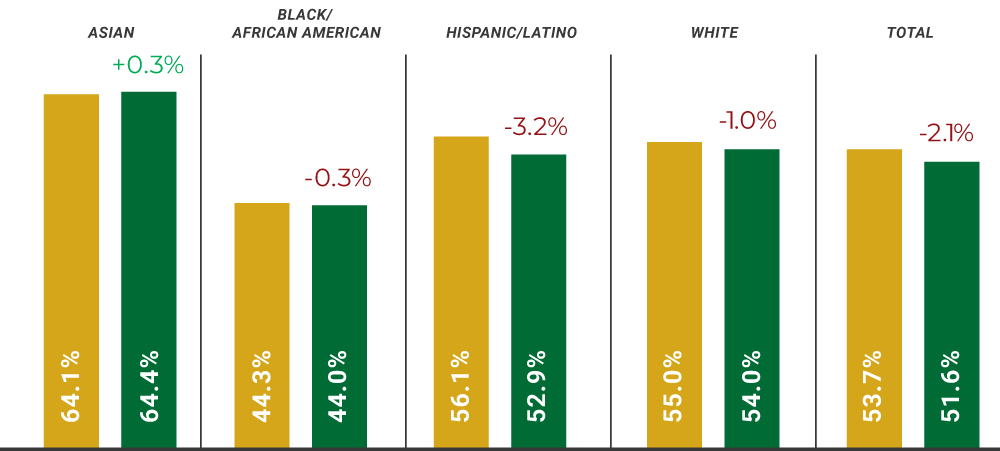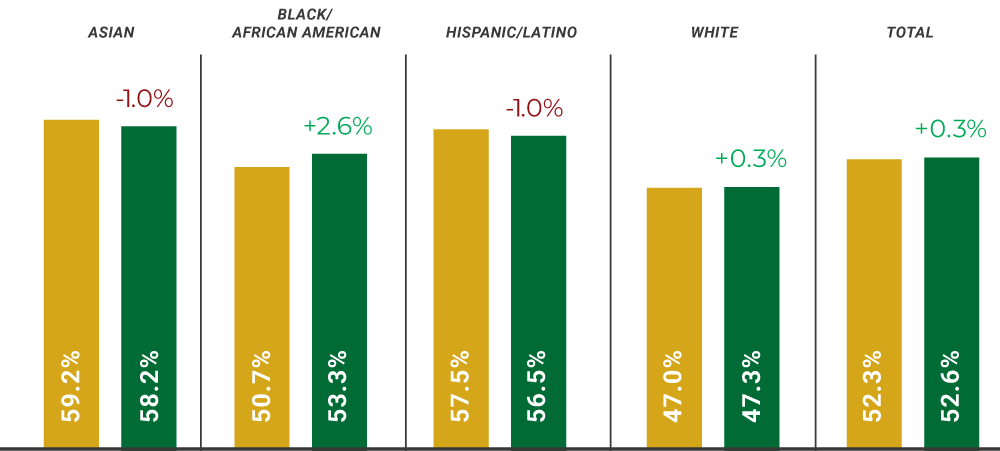Fall-to-Fall Retention
Fall 2018 and Fall 2019 CohortsFall-to-Fall Retention in the Era of Covid-19
Why Measure Fall-to-Fall College Retention?
Retention from the first year of college to the second year is an important indicator of student success. The College Board’s recent research on student retention in the era of COVID-19 suggests the negative impact of the pandemic on fall-to-fall retention was greater in 2-year institutions compared to 4-year institutions.1
At Northern Virginia Community College (NOVA), retention is an important measure of student success that is tracked in alignment with the College’s Strategic Plan. Fall-to-fall retention rates measure the percentage of first-time undergraduate students who return to the same institution in the following fall. First-time in college (FTIC) students include those who attended college for the first time in the fall term, students who attended college for the first time in the prior summer term and then enrolled in the fall term, and students with prior high school dual enrollment or other advanced standing who attended college for the first time in the fall term.
National Comparison
4-Year Public Institutions

2-Year Public Institutions

75.6%
2018 Cohort 3
76.3%
2019 Cohort 3
Change
+0.7%
53.7%
2018 Cohort 3
51.6%
2019 Cohort 3
Change
-2.1%
Northern Virginia Community College

63.0%
2018 Cohort 4
65.0%
2019 Cohort 4
Change
+2.0%
National Comparison
4-Year Public Institutions

75.6%
2018 Cohort 3
76.3%
2019 Cohort 3
Change
+0.7%
2-Year Public Institutions

53.7%
2018 Cohort 3
51.6%
2019 Cohort 3
Change
-2.1%
Northern Virginia Community College

63.0%
2018 Cohort 4
65.0%
2019 Cohort 4
Change
+2.0%
Fall-to-Fall retention at 2-Year Institutions
For all first-time in college students at 2-year public institutions, fall-to-fall retention rates declined for all but Asian students in the Fall 2019 cohort compared to the Fall 2018 cohort. Fall-to-fall retention rates were lowest for Black/African American students in both cohorts.3

Fall 2018 Cohort

Fall 2019 Cohort
Fall-to-Fall retention at NOVA
For all first-time in college students at NOVA, fall-to-fall retention rates declined for Asian and Hispanic/Latino students in the Fall 2019 cohort compared to the Fall 2018 cohort. Fall-to-fall retention rates were lowest for White students in both cohorts.4

Fall 2018 Cohort

Fall 2019 Cohort
Fall-to-Fall retention at Peer Institutions
When compared with peer institutions, NOVA consistently ranked second in the past two years. The fall-to-fall retention rate at NOVA increased by 2 percentage points for the Fall 2019 cohort compared to the Fall 2018 cohort.5
Peer institutions are selected for comparative analysis and benchmarking of institutional qualities. Peers have common qualities such as level of resources, student headcount, and institutional goals. Carnegie classification is one of the criteria often used in identifying a peer institution.6, 7
The current list of NOVA’s peer institutions is posted on the Office of Strategic Insights’ website.8

Citations
- Howell, J., Hurwitz, M. Ma, J. et al. (2021, June). College Enrollment and Retention in the Era of Covid. College Board.
- The Condition of Education (2021, May). National Center for Education Statistics.
- National Student Clearing House.
- NOVA Fact Book.
- Howell, J., Hurwitz, M. Ma, J. et al. (2021, June). College Enrollment and Retention in the Era of Covid. College Board.
- The Condition of Education (2021, May). National Center for Education Statistics.
- National Student Clearing House.
- NOVA Fact Book.
- Integrated Postsecondary Education Data System (IPEDS).
- Ward, Janet. (2006, July). Identifying Peer Institutions: Utilizing the New Carnegie Classifications and Other Web Resources. PACROA.
- The Carnegie Classification of Institutions of Higher Education.
- NOVA Office of Strategic Insights.




